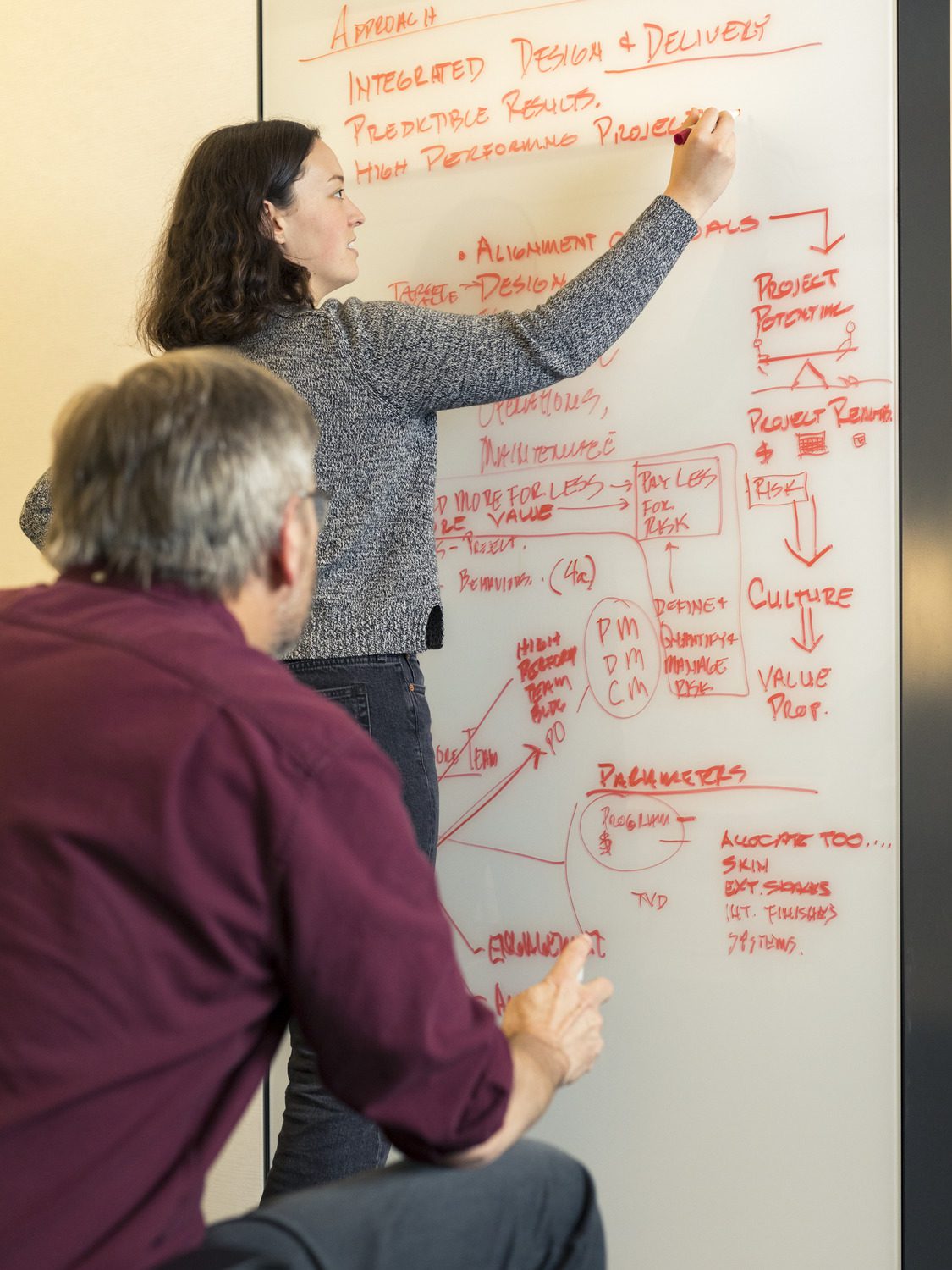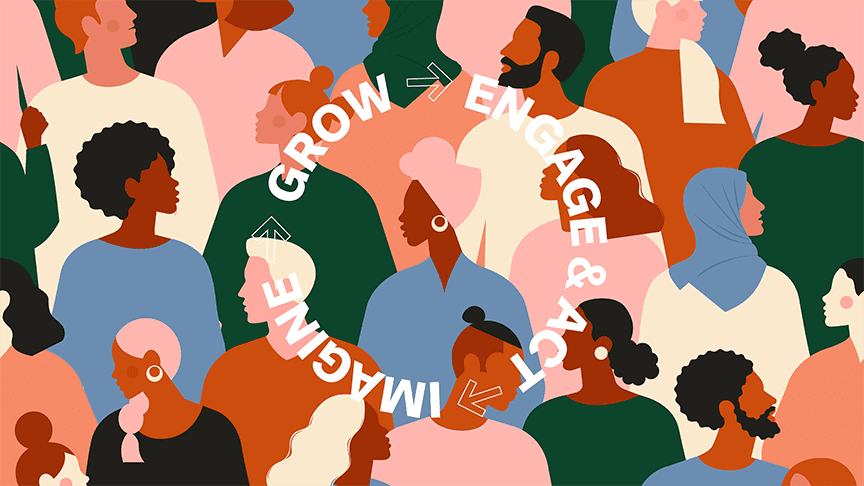Effective Project Management is Integral to Excellent Design
Aimée Duquette, Bethany Gelbrich
October 5, 2021Project Managers (PMs) at SRG get together about once a month to support one another, share ideas, and leverage our experiences beyond individual projects. Because it’s rare to have two PMs working on a project together, these internal meetings are a great opportunity for us to build relationships and learn from one another.
We invite people with a variety of experiences to engage with us to discuss the complexity of project management, its impact on design, and even the challenge of finding a suitable title for the wide range of responsibilities we have. The topic was also the basis for the whole firm to discuss during one of our weekly, internal design conversations.
What's in a name?
We are all trained architects who, after a number of years in the field with increasing responsibilities, grew into the role of managing projects. But the title, Project Manager, seems insufficient to get to the crux of the variety of responsibilities in our work.
Discussing the limitations of the title illustrates how we really want to challenge old assumptions about the perceived scope of a Project Manager – mainly that we “handle” spreadsheets and calendars. While none of us would hesitate to say that we love a good spreadsheet, the intelligence and impact of it is what’s vital. The ideal meeting cadence doesn’t come from plugging in a formula, it is designed by seeing the project at an extremely high level while also understanding the intricacies of the details. Schedules and meetings are not meant to tell people what to do and when, they are tools for solving architectural problems and communicating with the client. We’re designing the way the project functions via how it comes together. The value of having an architect design that process is invaluable to both the project team and the client, because well-managed projects result in the best designed spaces.
Good management is as important to the project as good design
At heart, we are advocates for design and protectors of the project. An essential part of that is providing the framework for the design process. All of us have experienced communication gaps and insufficiently examined details that have resulted in the design team spinning their wheels. It’s vital to plan, coordinate, and communicate to give our team guidance that focuses their efforts and shows them how their work fits into the broader context.
As a conduit between the client, contractor, subconsultants, and design team, a PM has the important role of setting expectations, because inevitably, there will be a conflict between the budget, schedule, and design, and it requires nuanced thinking to find a resolution. We determine not just the what and when, but also the why, the who, and the how. Is this design decision critical to the project? Why is this important to the client? Who should be involved in this decision? How should this be rolled out? Design informs how we work with the entire team and stakeholder groups. We relish grappling with complexity to answer tough questions and develop processes to steer the project forward.
Beyond the process, we agree that team health can make or break a project. Every team member must be integrated and activated in roles that utilize their skills while having opportunities to grow to their highest potential. To align skills sets with project needs and understand each individual’s career path starts with building trust. Our teams must be empowered to do what they’re best at while feeling secure and supported to push themselves to take on new challenges, grow, and explore big ideas. Managing team health in the remote environment has been challenging. The face-to-face interactions that we took for granted in 2019 became impossible, and we all had to innovate quickly. We have harnessed technology to stay connected, and constantly iterate on meeting cadences, virtual tools, and check-ins to sustain team health.
Almost any problem can be solved by strong communication and clear expectations
COVID-19 has been a major disruption, but there’s always some aspect of our work that will surprise us and push us to learn more. No matter how many years of experience we have, we still learn something new every day because of the inherently unique nature of our projects, teams, and clients. Success requires the emotional intelligence to connect with people, the organizational discipline to keep meeting schedules and budgets on track, and the design eye to ensure all this effort results in elegance. This level of dedication and attention inspires us and makes the practice of architecture even more fulfilling.
Essentially, architects are problem solvers, and managing a project just means sometimes we deal with personalities instead of waterproofing. On a project team, a person’s role may focus on drawing details, managing the schedule, or considering technical performance issues, but regardless of specialty, the design is the vision that steers the project, unites our work, and fuels our excitement.








